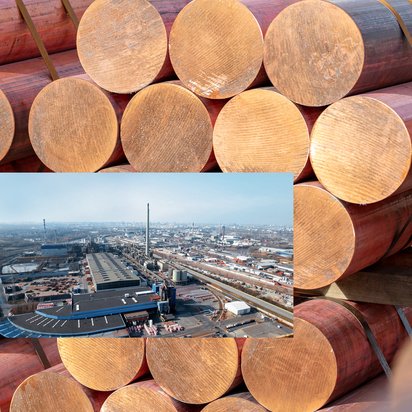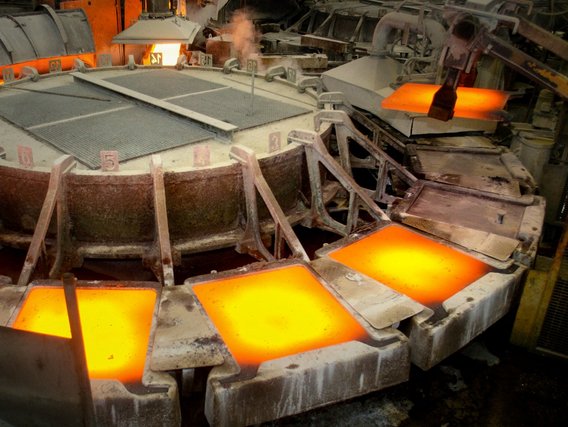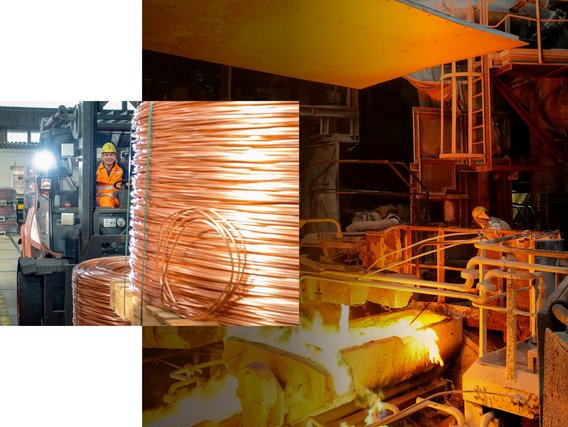Aurubis is Europe’s largest copper producer and also extracts other metals such as gold, silver, tin, and lead from metal concentrates and recycled raw materials. The company produces more than one million tonnes of high-purity copper cathodes annually, most of which are processed into wire rod. Aurubis is pursuing ambitious sustainability goals and wants to increasingly replace natural gas with hydrogen, provided that it is available at competitive prices. The company has been calling on the knowledge of TÜV NORD’s experts for several years.
In the summer of 2024, to reduce its future carbon emissions, Aurubis brought in two anode furnaces, in which liquid copper is cleaned and then poured into square plates that are further processed in a hydro-metallurgic process. The cylindrical anode furnaces are almost ten metres long, with a diameter of five metres. Mr. Latzko outlines the process that takes place in the plant: Once the copper has been decanted into the furnaces, air or oxygen is blown into the melt. This drives impurities to the surface of the vessel, which are removed as slag and reused. Natural gas is then injected to reduce unwanted oxides. With the new furnaces, Aurubis will one day be able to use hydrogen instead of natural gas. Pilot tests in 2021 showed that this was technically feasible.
Conversion with a focus on safety
The planning phase began a good six months before the conversion, Mr. Latzko explains: “We were involved from the very beginning, working with Aurubis to analyse the risks and supporting the approval processes.” Key issues at the top of the agenda were explosion protection and pressure, alongside functional safety. Also developed were implementation proposals for the new hydrogen supply. As soon as the infrastructure for the new energy source is in place, Aurubis will have the option of converting the process from natural gas to hydrogen. Dana Nowak describes the work of her department in more detail: “From a safety point of view, we assess whether certain plant components or materials are suitable for use with hydrogen, for example, and which measures can minimise possible hazards. This will help the plant’s operator with their decision-making.”
Before the anode furnaces went into operation, everything was carefully checked. As part of the tests that are legally required before commissioning, for example, experts from several departments verified that the planned parts had actually been installed. They tested the safety features and made sure that all lines and connections were tight and that all the necessary documents were complete and plausible. Mr. Latzko emphasises the objective and independent nature of the test: “Work for which our department has provided Aurubis with safety-related advice is of course assessed by experts from other operational units.”
Liquid copper solidifies in the square moulds of the casting wheel.



